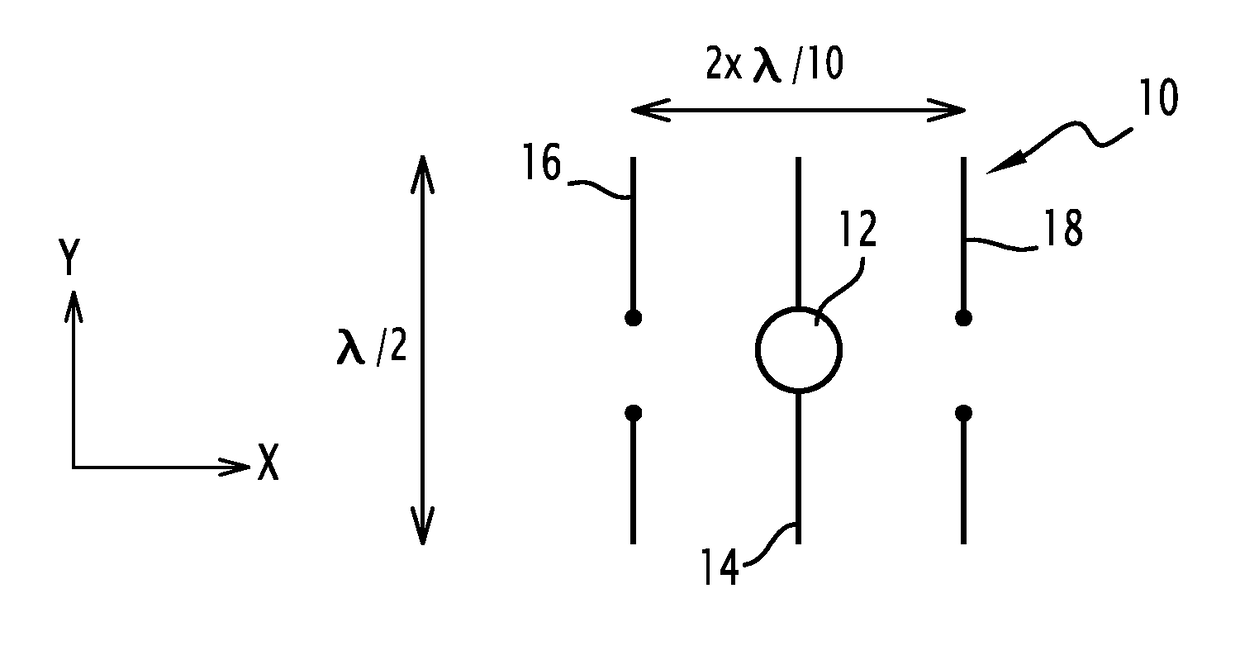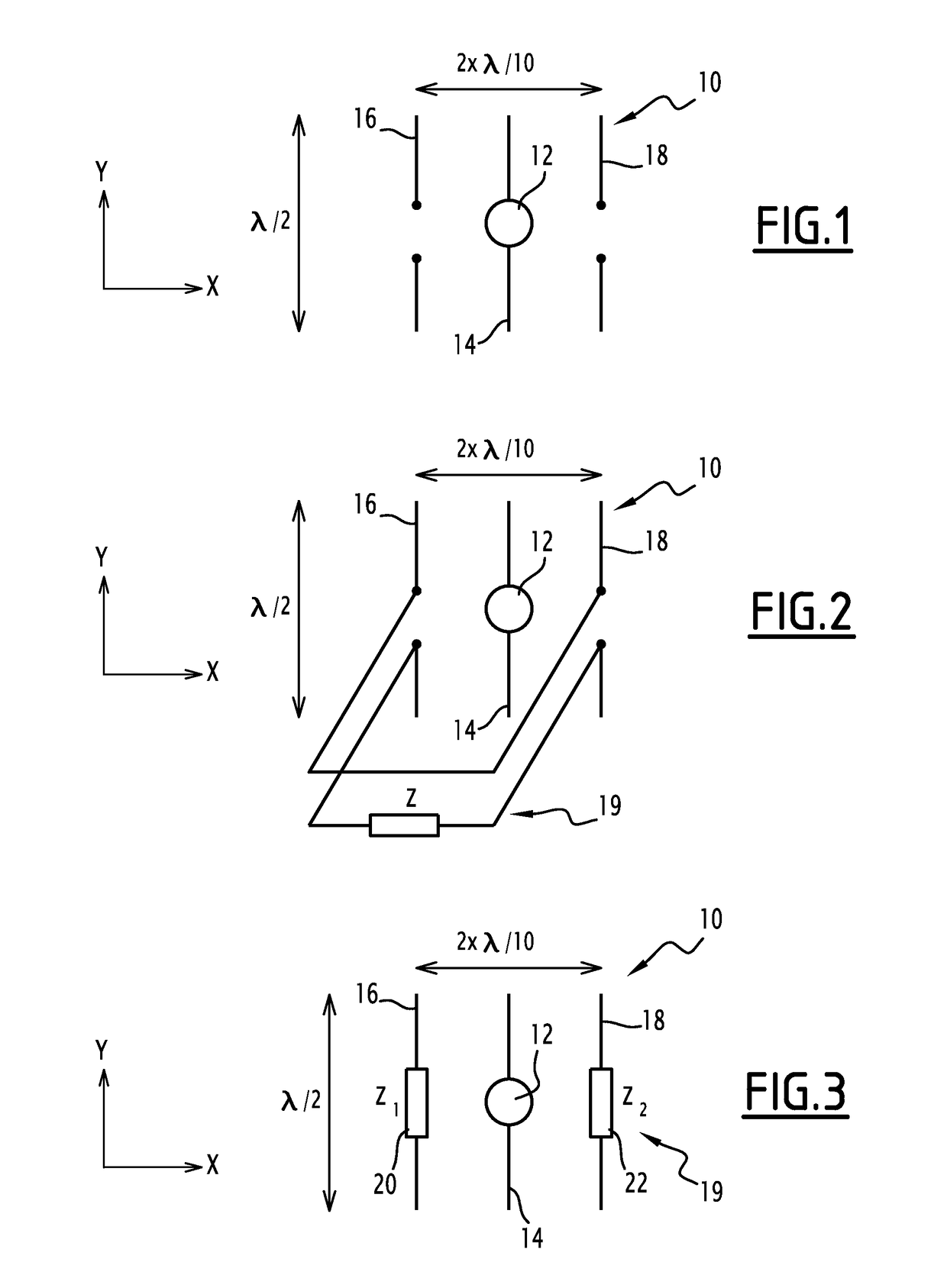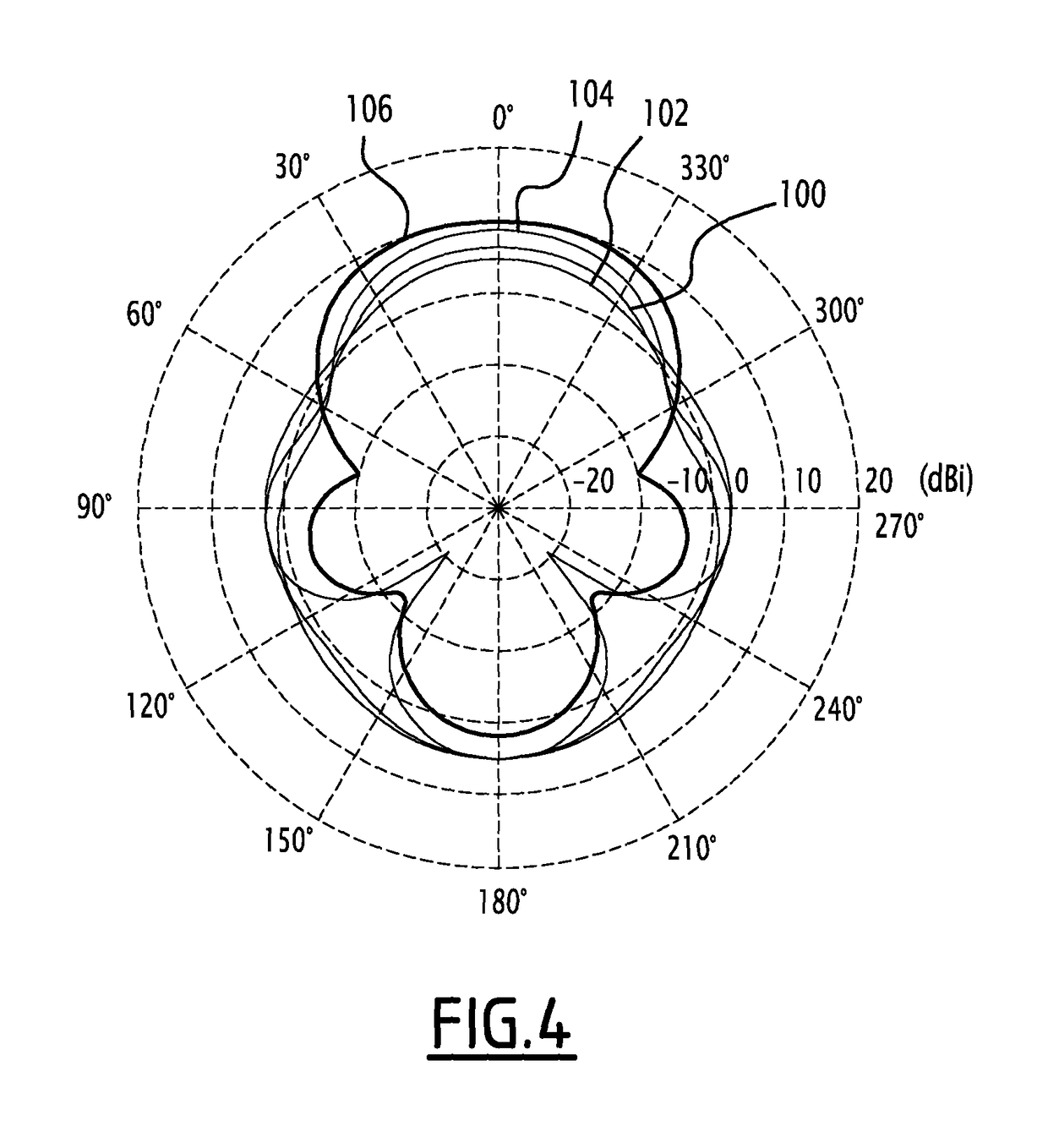Method for determining an antenna array
a technology of antenna array and antenna array, which is applied in the direction of antennas, instruments, measurement devices, etc., can solve the problems of increasing the size of the antenna array and the limitation of the maximum directivity level which may be achieved with this type of antenna array structure, so as to improve the directivity and reduce the compactness
- Summary
- Abstract
- Description
- Claims
- Application Information
AI Technical Summary
Benefits of technology
Problems solved by technology
Method used
Image
Examples
Embodiment Construction
[0025]An antenna array 10 is proposed, as illustrated in a generic way in FIG. 1 and by both embodiments of FIGS. 2 and 3. An antenna array generally comprises of at least one primary antenna and one secondary antenna. Each of these antennas being part of the antenna array comprises one or several radiating portions. The radiating portions of each separate antenna are physically separate. By the expression “physically separate”, it is meant that there is no physical contact between two radiating portions belonging to two separate antennas.
[0026]For what follows, two axes X and Y contained in FIGS. 1 to 3 are defined. The axis X is perpendicular to the axis Y. A direction parallel to the X axis is called a longitudinal direction and a direction parallel to the axis Y is called a transverse direction.
[0027]The antenna array 10 includes a source 12, a first antenna 14, a second antenna 16, a third antenna 18 and a circuit 19 (not shown in FIG. 1).
[0028]The first antenna 14 is an antenn...
PUM
 Login to View More
Login to View More Abstract
Description
Claims
Application Information
 Login to View More
Login to View More - R&D
- Intellectual Property
- Life Sciences
- Materials
- Tech Scout
- Unparalleled Data Quality
- Higher Quality Content
- 60% Fewer Hallucinations
Browse by: Latest US Patents, China's latest patents, Technical Efficacy Thesaurus, Application Domain, Technology Topic, Popular Technical Reports.
© 2025 PatSnap. All rights reserved.Legal|Privacy policy|Modern Slavery Act Transparency Statement|Sitemap|About US| Contact US: help@patsnap.com



